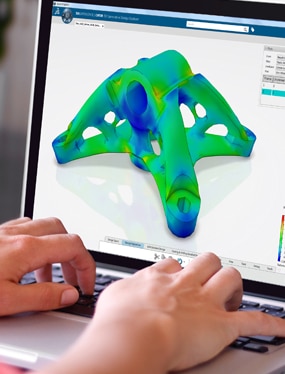
How Do Production Processes Change Component Design?
Anyone who has the dubious pleasure of knowing me will be up to speed on my current obsession. I’m rebuilding a 1980’s formula ford, pretty much from the ground up. (In fact I haven’t even stripped it down fully yet.. but it will be recreated from bare metal when we get down there. ) At the time it was made I really loved these small single seaters; all apart from one significant feature. They had a pre-historic space frame chassis. And proper racing cars had carbon tubs..
At this point I’ll make a slight, but relevant, detour. Le Mans Porsche’s of the late 1960’s and early 1970’s signal a high water mark of various technologies and design approaches, and feature some of the most creative space frames ever manufactured. If you look at one, the 917 is good example, you can see that every tube represents a load path, and that all loads are taken directly in tension or compression. Where there is a danger of buckling the structure is made more complex to resist this. A look at the Birdcage Maseratti, and dare I say it some Formula Fords, will reveal the same approach. Few, however, took the Porsche route of pressurising the chassis and providing a gauge to show the driver if it had cracked. That’s working at the limit. (You may be able to spot another obsession here..)
Composite structures are designed to achieve the same thing; instead of tubes, unidectional fibres link the ends of the load paths, and where buckling is an issue, more complex lay-ups aim to reduce this. A new manufacturing technique allowed more efficient, stronger, structures to be created, but the design approach was the same – join the load paths directly with material – fight buckling– eliminate weight elsewhere. Its just with a composite structure you can’t see it. (Its interesting to think about the folded ally chassis that were used between composites and spaceframes at this point – surely the material was selectively loaded and not really optimal – but they must just have been more efficient than a steel space frame.)
So, to bring this us bang up to date. 3D printing, or additive manufacturing is everywhere, certainly it is on the BBC website. I thought that this technology was all about models of Yoda and deeply scary scanned models of hi-fi designers. That was until a customer told me that the allowable design stress for 3D printed titanium was quite high. In fact it’s surprisingly high. OK, astoundingly high to be honest. And that revolution in manufacturing technologies allows the designer to exploit, at a small scale, the approaches used by space-frame and composite designers. The song remains the same, its just how its played that’s the movable feast.
So at some point I need to steer this round to the day job. Optimisation was always a technology that could be dismissed as something which could be pretty much relied upon to create interesting but unmanufacturable designs. And therefore its usage was a tiny fraction of what it should and could have been. But AM kind of, in some circumstances, breaks us out of that loop. Crazy biomimetic forms can be manufactured as readily as more standard engineering shapes, and creative optimisation can be used to optimise the crazy shapes. Using rules which, you’ve guessed it, link the load paths with material, add complexity when buckling becomes an issue and remove material where it isn’t needed.
So I’ve been working with 3 technologies recently. AM – the company has its own 3D printer now, and two types of optimisation in ATOM; standard topology and lattice optimisation. My desk is littered with 3D printed topology optimised parts.
Lattice optimisation is the technology du jour though. It’s a technique which allows the user to create a network of beam elements and optimise their cross section. individually You end up with a space frame, but one that scales because of the manufacturing technology. Perhaps I should have been a little less down on the Formula Ford spaceframes; now I own one I think I’ll learn to love them.




